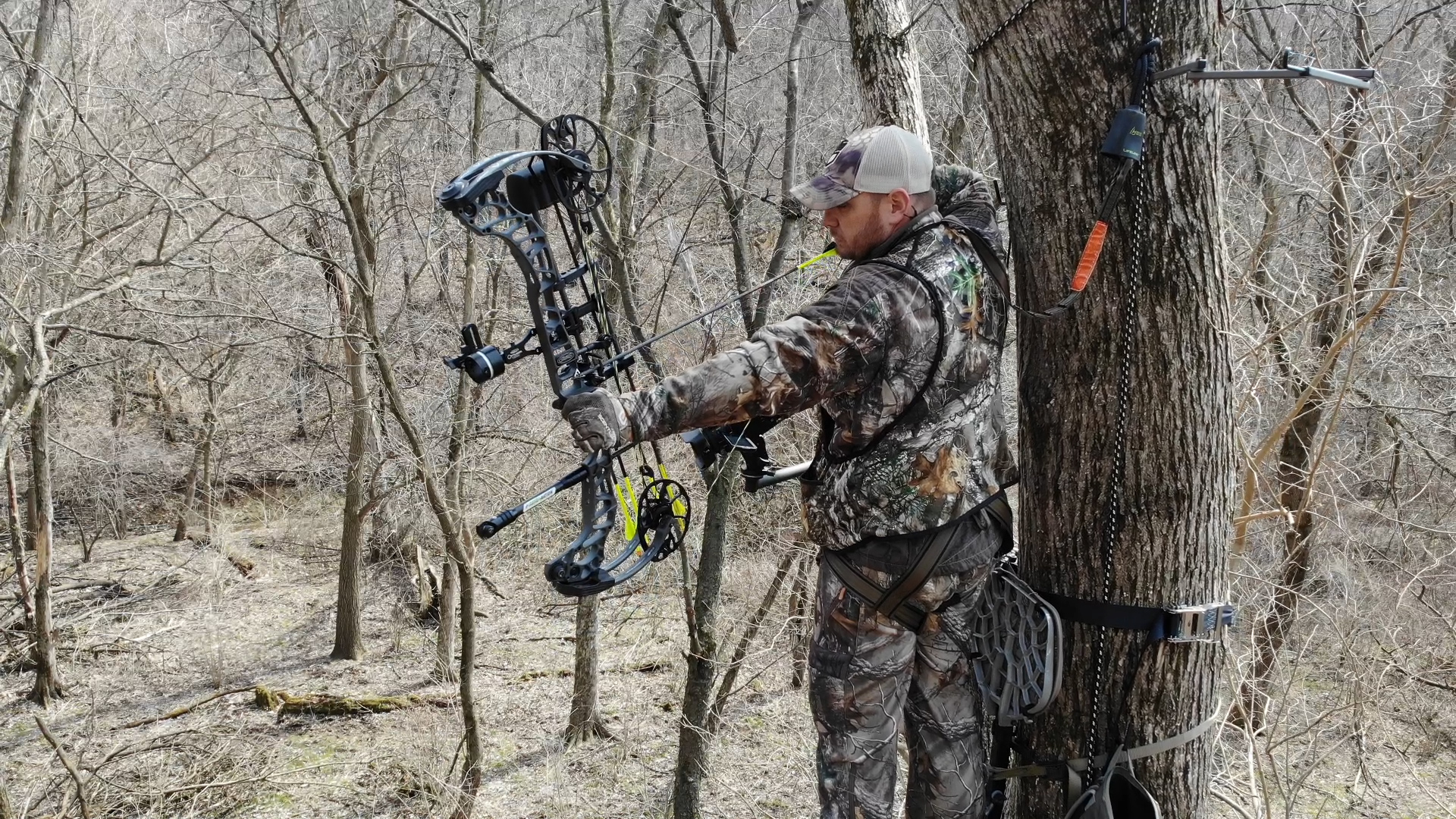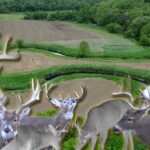Twentieth Century philosopher George Santayana once said, “Those who cannot remember the past are doomed to repeat it.” Chances are he wasn’t thinking about deer hunting when he spoke those words, but the principal still applies, nonetheless. If you are like me, just remembering what I had for lunch yesterday is challenging enough. Being able to recall specific details of the hunts from years past can be dang near impossible without having some type of written account. Don’t get me wrong. I still remember vivid details of many of my successful hunts from years past, but it’s those hunts when no trigger was pulled where the details quickly fade. But there is plenty to be learned from every hunt, and that is why a hunting journal can be such a great resource for the serious deer hunter.
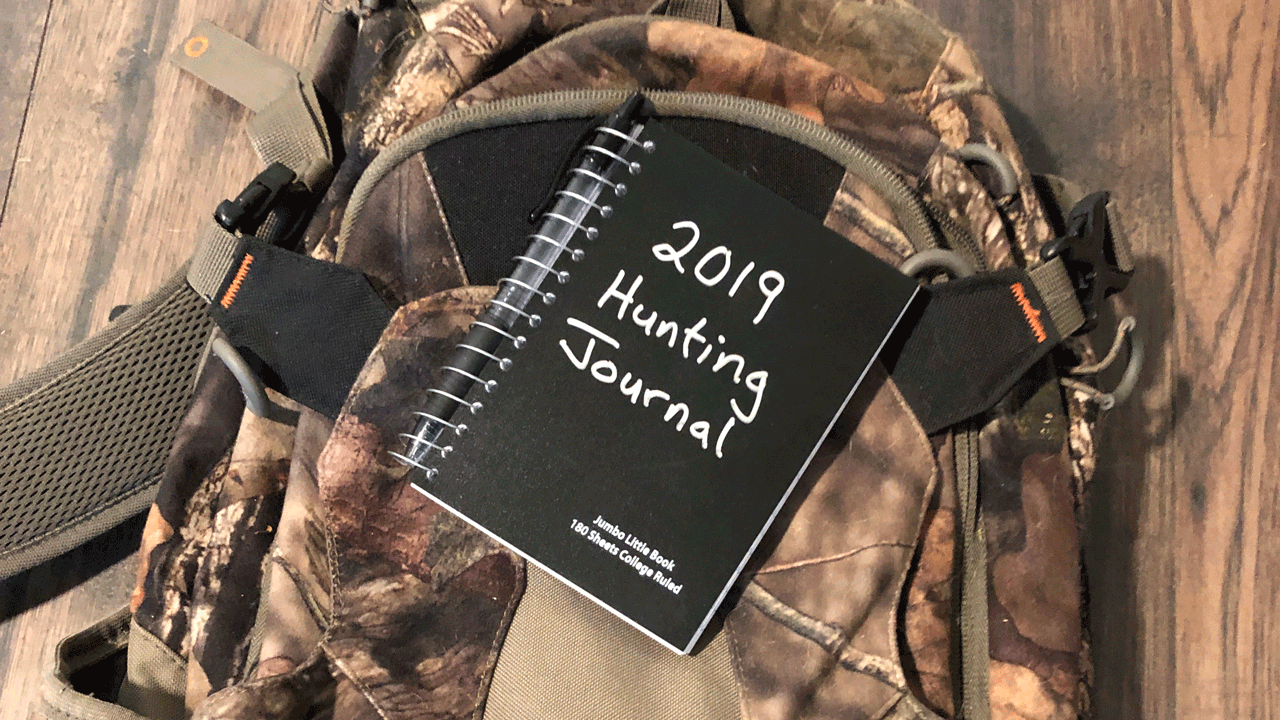
Do you keep a hunting journal? Should you? Is it worth it?
More than just a means of reminiscing about past hunts, the deer hunting journal can be a powerful tool for choosing when and where to maximize your hunting efforts. When faced with common deer hunting variables on the properties you hunt – changing weather conditions, the presence or absence of specific crops or food plots, changes in the local mast crop, or even the seasonal timing – a quick glance back through a few years’ worth of entries can provide a wealth of information on how the deer have reacted to those same circumstances in the past.
Consequently, knowing how the deer will react will go a long way in developing a plan to take advantage of those factors.
WHAT TO INCLUDE
Since a hunting journal is simply a personal account of your hunting experiences, there is no right or wrong way to set one up. It can be as basic or as detailed as you want to make it. However, I’m a firm believer that the more details included in the journal, the more accurately you will be able to draw conclusions on the deer’s behavior and patterns on the properties you are hunting.
So, just what types of information should you include in your hunting journal? Below are some of the basic fields that I recommend, along with a brief description of each. The goal is to try and cover the most common variables that influence a deer’s behavior, without making the journal so detailed that it becomes tedious to keep up with.
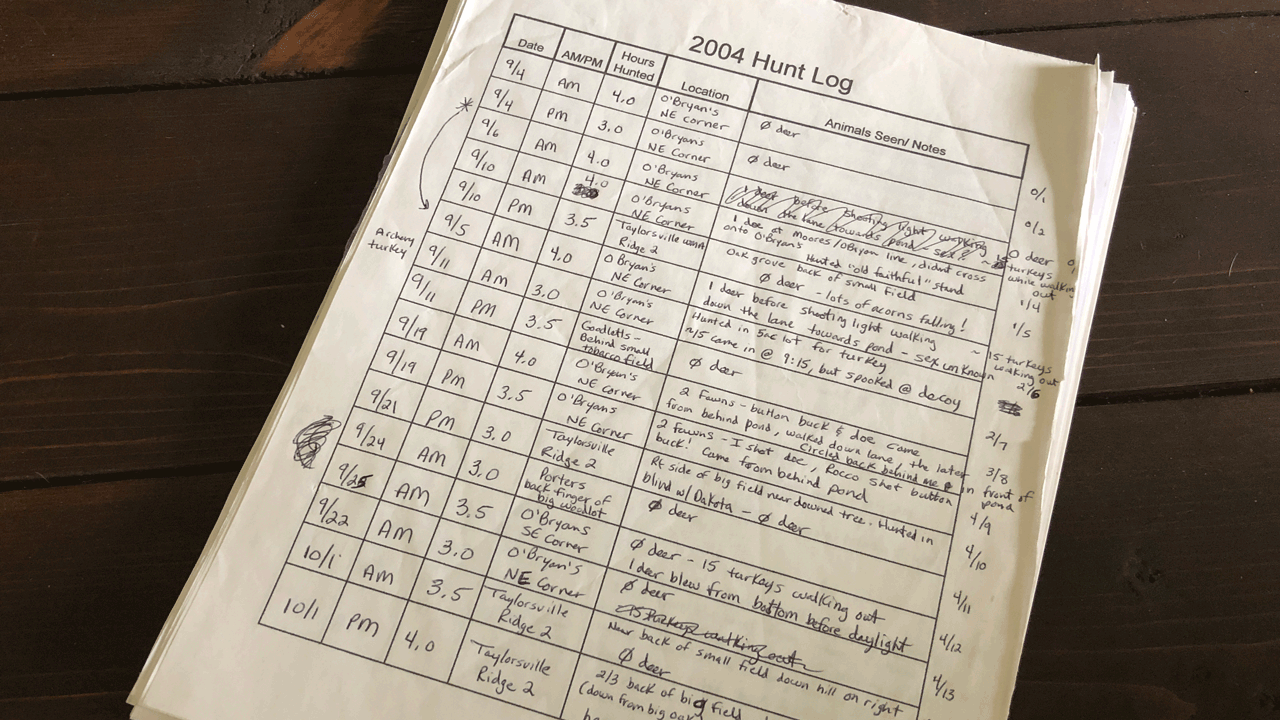
Log the activity and you’ll quickly discover patterns on the properties you hunt.
PRE-SEASON SUMMARY
I like to start each season of my hunting journal with what I call a ‘pre-season summary’. This consists of a brief description of the properties I have permission to hunt, including acreage, landowner contacts, and any plantings or major changes that have taken place since last season that may affect deer movement on that particular piece of land, as well as any target bucks I may have identified through trail-cam photos. This serves as a reminder of what was going on with each property during any given year. As a result, you are not left trying to remember what year the Smith farm was logged, or what was planted on the Jones’ farm the year you shot that 140-inch 10-pointer.
With that section complete, I go straight into my daily hunt logs.
DATE
This probably goes without saying, but the very first detail I include on every entry is the date that the hunt takes place. The timing of a hunt influences almost every aspect of a deer’s behavior – its feeding and travel patterns, as well as the effects of the rut. The only way you will be able to accurately compare behaviors from year to year is to know exactly what dates your hunts took place.
LOCATION
As important as the date is the location of the hunt. Knowing when you saw the most deer, or the biggest bucks over the course of several years won’t do you much good if you cannot remember where you saw those deer. This may seem trivial if you only have one or two places that you hunt, but keep in mind that maintaining a deer hunting journal should be seen as a long-term project. Over the period of several years, old hunting spots can be lost and new ones can be gained, so take the time to keep track of your general location and the information you gather will be much more valuable to you.
Beyond just what farm you were hunting, you will also want to include your specific stand location for each hunt. If you are hunting standard stand locations that you have given names to over the years, then simply identifying the stand by name may suffice. If, however, you are hunting a new area, or are a more mobile hunter who changes locations regularly, then a detailed description of your location will serve as a substitute. You may also want to include a hand-drawn map to compliment your description for future reference. However, with most everyone packing a smartphone these days, the easiest route would be to simply identify each stand with its GPS coordinates. This leaves no room for misinterpretation, regardless of who uses the data, or how the property has changed since the information was recorded.
HOURS HUNTED
Another basic detail that you will want to include is the time of day that you were hunting. This can be as simple as including a starting time and a stopping time for each hunt. If I hunt from daylight until dark, with a lunch break midday, then I will log it as two separate hunts. That way it is easier to keep track of what happened in the morning versus what went on that evening.
WEATHER
This is where the hunting journal can get as complex as you want it to be. There are numerous weather factors that may influence deer movement, and you have to decide how many of those you want to try to keep up with. At a bare minimum, I would include the temperature at the time of your hunt, wind speed and direction, and a general description of the weather conditions – overcast with light rain, sunny and hot, or partly cloudy with an approaching cold front, for example.
For those of you who are armchair meteorologists, you may also want to include weather parameters such as barometric pressure, relative humidity, dew point, etc. The options are almost endless. Keep in mind that the more of these variables that you have to keep up with, the more your hunting journal will seem like work. Fortunately if you skip recording any weather data, or decide at a later date that you need additional details, there are archives of daily weather data available online.
NUMBER OF DEER SEEN
This field is pretty self-explanatory. Simply jot down the number of deer you saw while hunting, breaking them down into one of four groups: bucks, does, fawns, and unknown. I throw in the “unknown” option as a means of quantifying deer that you just get a glimpse of, or deer that are too far away to determine sex/size.
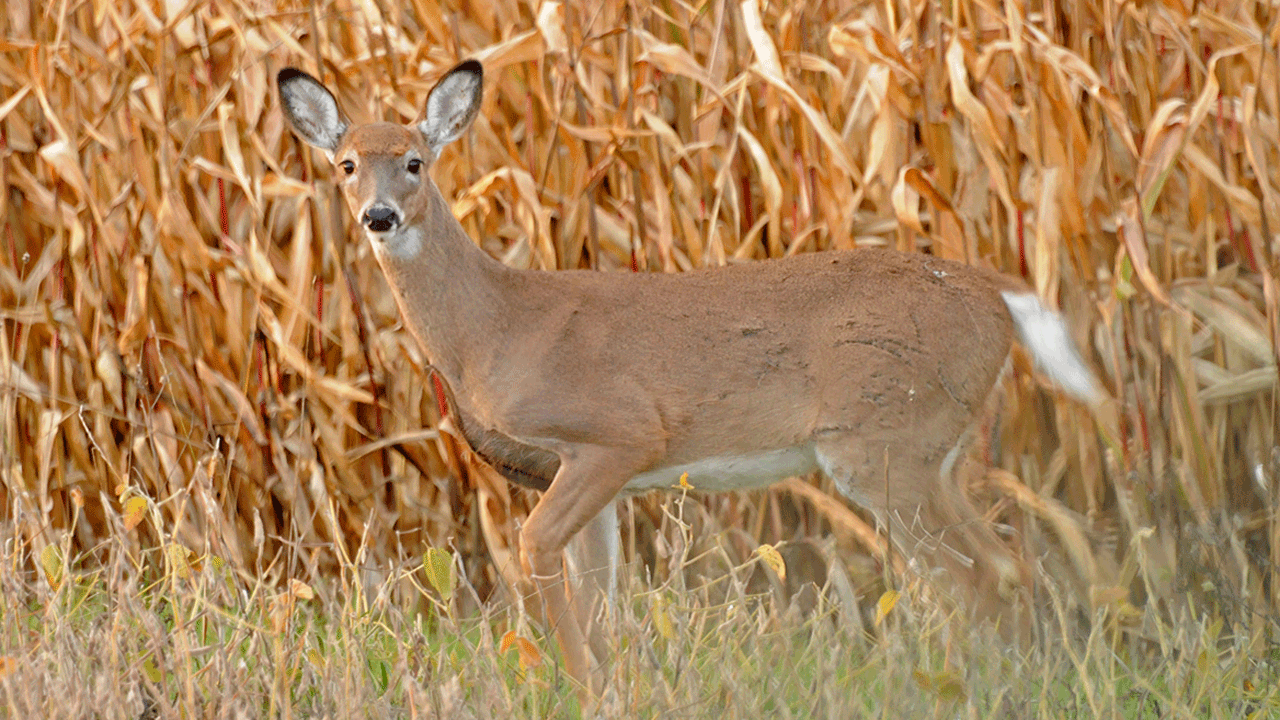
Logging deer sightings can go a long ways towards figuring out your plan for success.
HUNT NOTES
This is the meat and potatoes of a hunting journal. The catch-all portion where you can give a brief narrative of your hunt, explaining what you saw, when you saw it, what direction it came from, etc. This portion of the journal is critical in order to fill in the gaps of the basic details that you have included. Knowing not only that you saw six deer on a particular hunt, but that the deer came down the trail from the east at 6:35 p.m., crossed a saddle and passed by just out of bow range is much more useful for making future decisions regarding stand placement, and hunt times.
MAP
While certainly not necessary, a map can be a valuable visual aid when included in your hunting journal. It doesn’t have to be a work of art or a precise, scale drawing. The main goal is to show what deer movement and behavior you witnessed in relation to where you were hunting. It should also include any pertinent sign in the area, such as rubs, scrapes, large tracks, etc. When combined with your detailed hunting notes, the map should provide an accurate picture of what took place during your time on the stand.
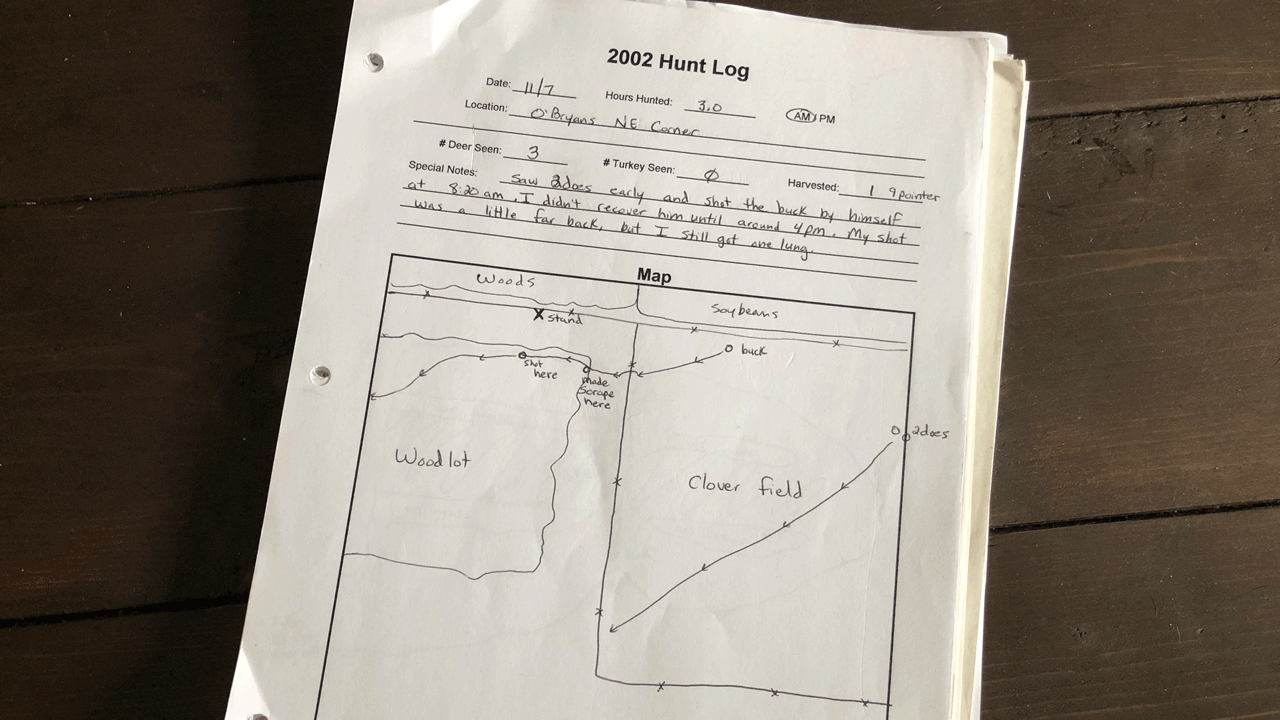
Maps and logs from the 2002 season.
KEEPING IT TOGETHER
Once you have decided what you want to include in your hunting journal, you then have to figure out how you are going to keep it organized. A journal can be as simple as a spiral notebook or cell phone app, or as complicated as a computer database. Whatever you choose, just make sure that it is something that you can easily keep up with.
While I log a lot of scouting data on my onX Hunt app, I’m still old school when it comes to my hunting journal, keeping a small spiral notebook with me in my hunting pack. I always have my hunting pack, so I always have my journal.
SUMMARY
Remember that a deer-hunting journal is only beneficial if you are going to use it. This means both maintaining the journal by keeping accurate records of each and every hunt, as well as using the information that you have to establish a game plan for your deer hunting properties. While it requires a little work to get one started and to keep it maintained, the rewards can be great. Not only will you be able to look back years from now and reminisce about hunts that would otherwise be long forgotten, but you will also have a powerful tool for planning future hunts on your favorite hunting properties.

 By
By 